Art World
The Faena Festival Kicks Off in Miami Beach, Promising ‘The Opposite’ of the Art Fair Experience
With the theme 'This Is Not America,' the spectacular assembly of performance and public art is free to the public.
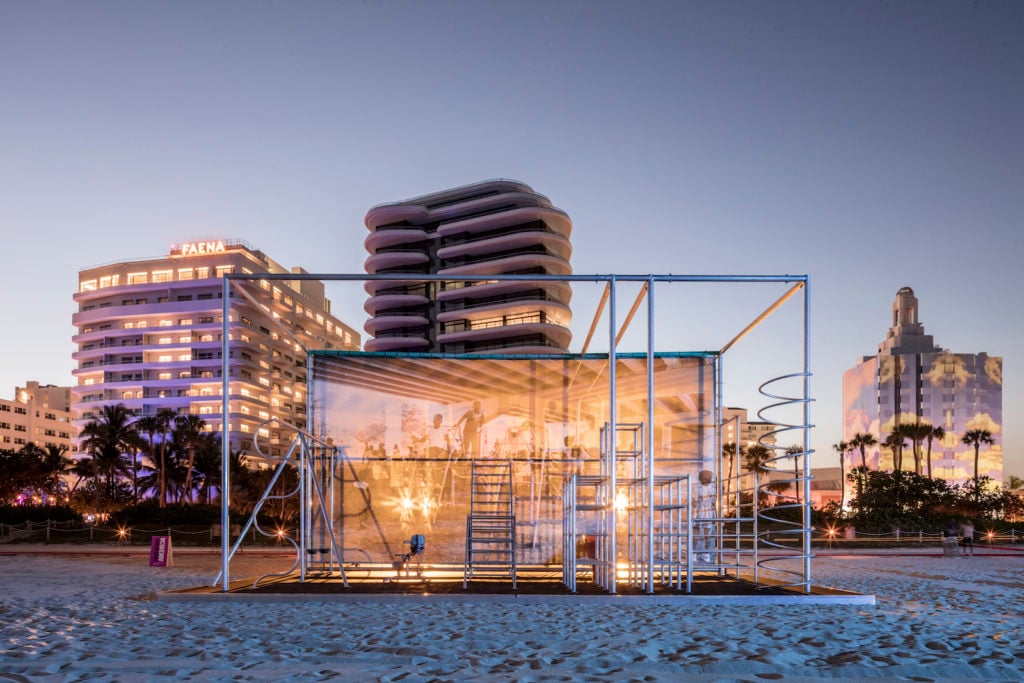
With the theme 'This Is Not America,' the spectacular assembly of performance and public art is free to the public.

Sarah Cascone

Last night, Argentinean real estate developer Alan Faena unveiled the inaugural Faena Festival, a free week-long art event that kicked off Miami Art Week ahead of Art Basel Miami Beach. Titled “This Is Not America,” after Alfredo Jaar’s seminal 1987 video art piece A Logo for America, the festival includes a series of artist performances and public art on the beach. Indeed, Jaar’s piece, strikingly, is floating just off shore, the animation reflected in the rippling ocean.
Four years ago, Faena hosted a traditional Argentine barbecue from chef Francis Mallmann on an empty lot overlooking the ocean in Miami Beach, promising to transform the neighborhood into a new arts district for the city. Following his increasingly ambitious art programming in the years since, last night was in many ways the culmination of Faena’s vision.
“Our concept was to work together with the artists to offer to the community these performances and installations—and the most important thing is that it’s free and open to everybody,” Faena told artnet News. “In a moment where everything is about selling [or] the fair [or] buying, we are offering the opposite!”
To bring this ambitious project to life, Faena enlisted curator Zoe Lukov, who chose Jaar’s piece, first shown on the Times Square Spectacolor electronic billboard as part of the Public Art Fund’s long-running “Messages to the Public” series, as its inspiration.

Alfredo Jaar, A Logo for America (1987). Photo courtesy Galerie Lelong & Co., and the artist.
The Faena Festival “takes Alfredo’s iconic work as its point of departure to explore all of the manifold ways that we are American and what America means from south to north and back again,” said Lukov during the evening’s official remarks. “It explores America as a myth, as a concept, as a narrative, as an idea bigger than ourselves—bigger than the waters and borders that frame it. It hopes to image something new and open up a conversation to the multiplicity and to the cacophony that we are.”
Jaar was eager to restage the work in order to call attention to the US’s plans to limit the number of admitted refugees to 30,000 next year. “This is the lowest ceiling this country has placed on the refugee program since its creation in 1980. The US seems to be at war against refugees and immigrants when they have always been part of the origin and fabric of this country,” he said in a statement. “The meaning of America has never been challenged in such a shocking way, and so to present A Logo for America in Miami today is for me an extraordinary opportunity to suggest that another America is still possible.”
Miami Beach mayor Dan Gelber was on hand for the opening, which began with a champagne toast in the Faena Forum courtyard, before guests processed upstairs for the first performances. “This is going to be [an] experience,” Faena told the crowds, instructing everyone to stick close together.
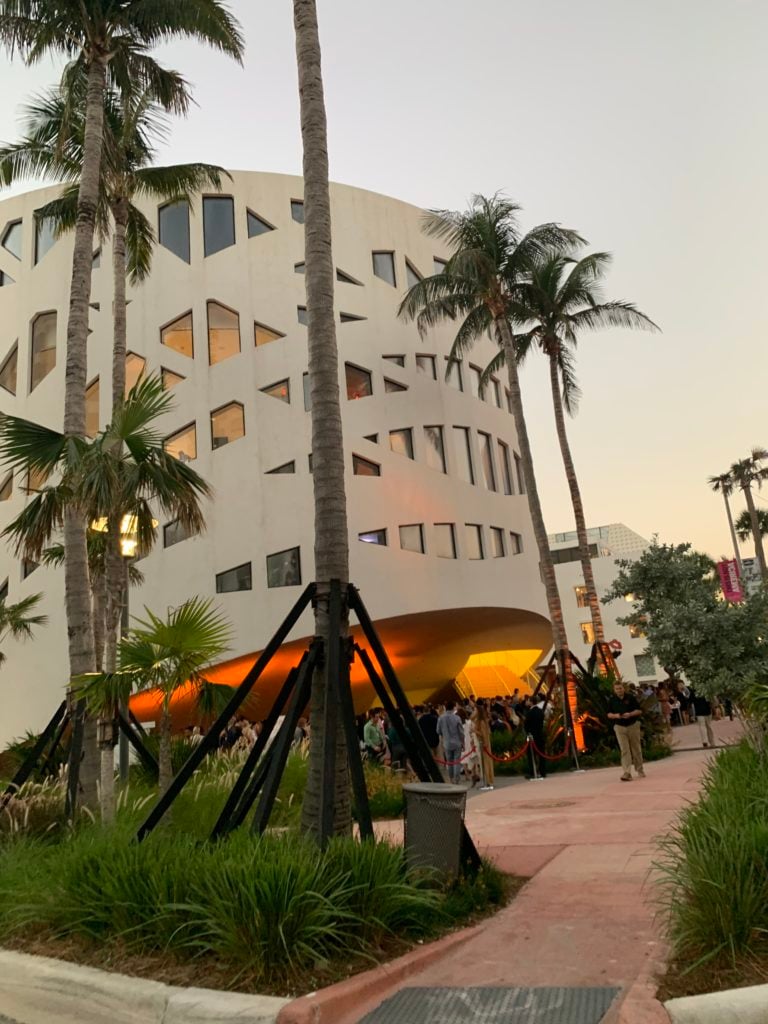
The Faena Forum. Photo by Sarah Cascone.
Tightly bunched crowds craned their necks to see a series of three site-specific dance pieces conceived by Cecilia Bengolea, who practices Jamaican Dancehall. The works were collectively titled La danza de la esponja. Philosophy of Joy. Favorite position. In an artist statement, she described the pieces as being inspired by intelligent marine life and representing “the bridge between cultures of the African diaspora from Jamaica to Cuba, from Haiti to Miami, and the contemporary ideas of the sacred and profane.”
In one segment, a sole performer in a translucent green full body suit contorted her body into impossible positions, motions inspired by the malleability of an octopus, in front of an animated video of a similar figure.
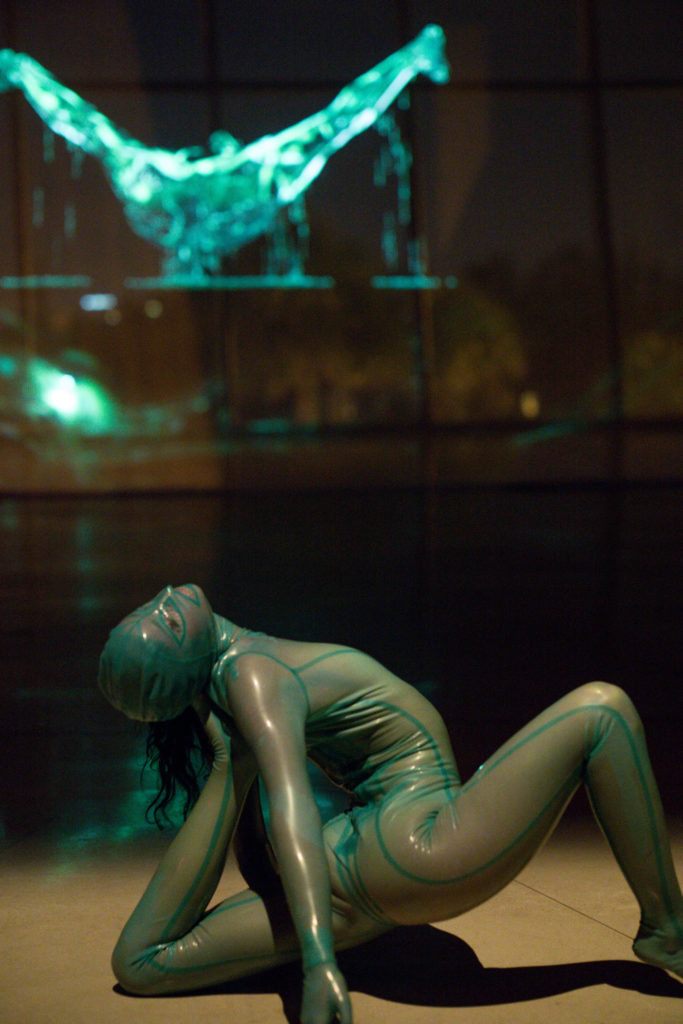
Cecilia Bengolea, La mujer que se disfrazaba como esponja para bailar al fondo del mar: Hommage al Mar 2018) at the Faena Festival. Photo by David Prutting for BFA, courtesy of Faena Art.
Then, across the room, performers from BamiDele Dance of African Arts and the African Watoto Dance Theatre and emerged, young children masterfully drumming and dancing. Later, Bengolea led group of dancers, their flesh-toned costumes adorned with sea sponges, in a primal dance circle, after which the children returned, leading the crowds out of the building and down the beach.
We lingered only briefly by the shore, where there were works by artists including Derrick Adams, who delved into the city’s racially fraught history with a sculpture based on an archival photograph of African American Miami children playing on one the country’s first under-the-highway playgrounds, built in a low-income neighborhood razed in the name of infrastructure.
“It’s highlighting certain problematic histories within the landscape of this city,” Adams told artnet News. “What I saw looking at this photograph, even through it was bleak, I saw this area of promise and of community.”
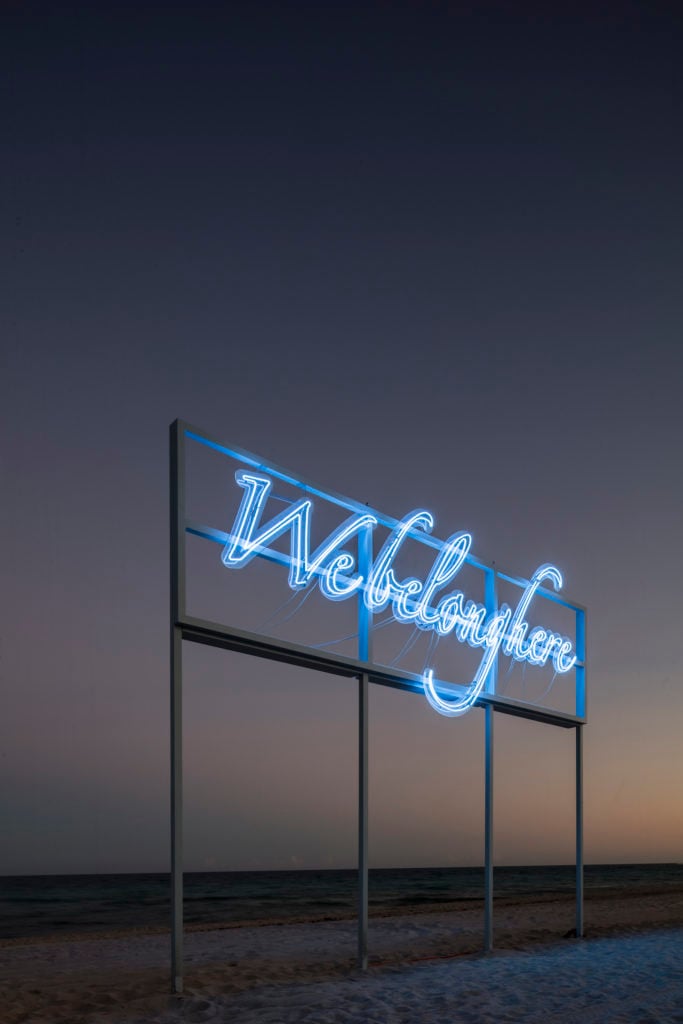
Derrick Adams, America’s Playground (2018). Photo by Kris Tamburello, courtesy of Faena Art.
Other highlights include Tavares Strachan’s neon sculpture We Belong Here, similar to his piece You Belong Here at New Orleans’s Prospect.3 in 2014; and a house by George Sánchez-Calderón, based on the homes in Levittown, New York, the country’s first planned suburb. Sánchez-Calderón will reportedly set it alight this evening in honor of those who have lost their homes in the California forest fires.
After the crowd had taken in these attractions, Faena urged everyone to move it along. “There is a lot to see!” he exclaimed.
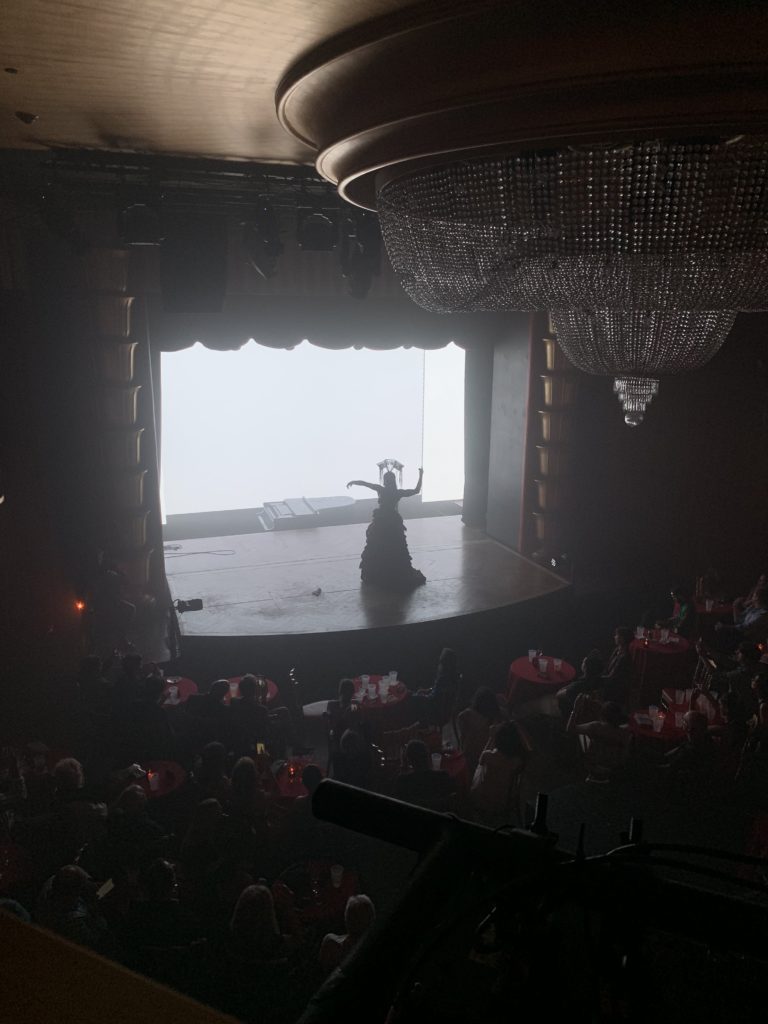
boychild performs Wu Tsang and boychild, Love Is a Rebellious Bird at the Faena Festival. Photo by Sarah Cascone.
The final stop was the Faena Hotel, where the crowd was fortified with traditional Argentine empanadas and choripán sandwiches (champagne had been poured liberally back at the forum), before the crowning performance, in the cabaret-style theater. It was the perfect venue for Wu Tsang and boychild’s piece, Love Is a Rebellious Bird, in which Wu Tsang played piano and sang, while boychild performed a new-age version of Carmen.
After the curtain call, the packed house slowly dispersed, and Faena himself headed down from the balcony seats with his guests. Night one of the festival was done.